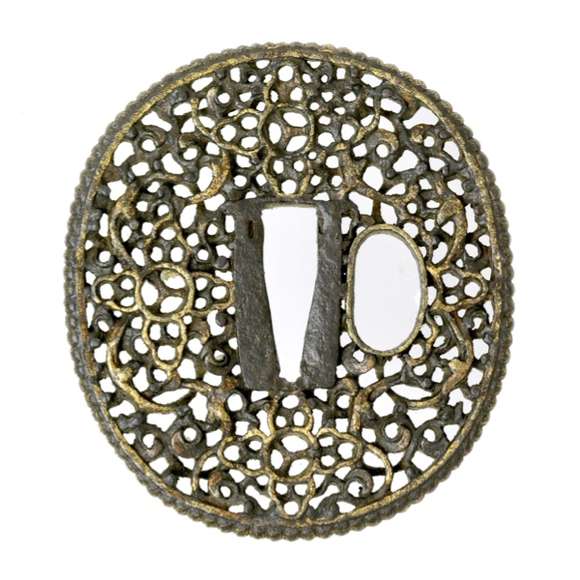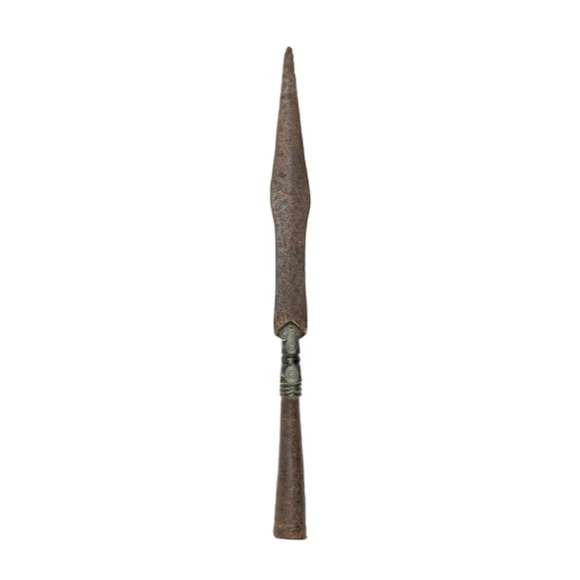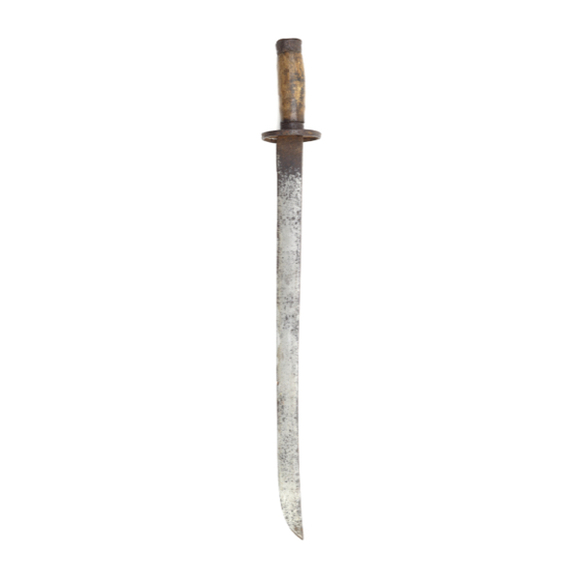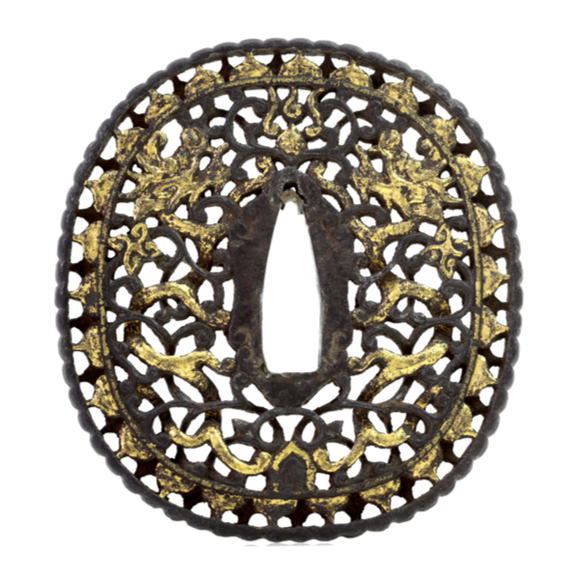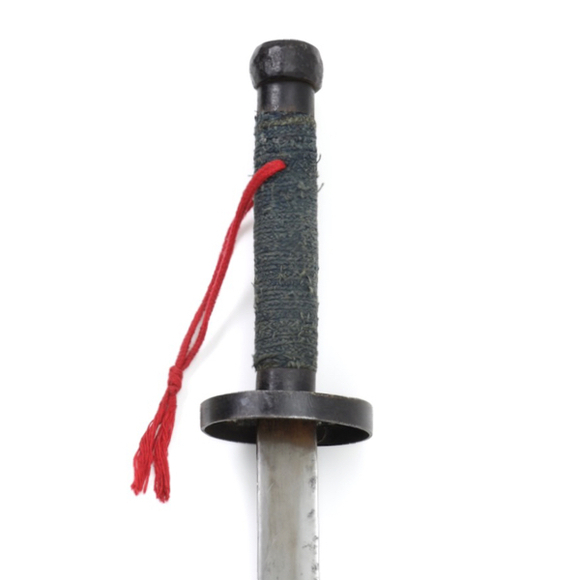A very rare Chinese saber guard dating from the height of the Qing dynasty.

76.8 cm / 30.2 inch
60.8 cm / 23.9 inch
forte 11 mm
middle 6.5 mm
near tip 5 mm
forte 40 mm
middle 31.5 mm
near tip 25 mm
1037 grams
13.8 cm from guard (handle side)
China
Iron, steel, brass.
Early 17th century.
(Ming-Qing transition period.)
Introduction
The Chinese straightsword, the jiàn (劍) has traditionally been the side-arm of the scholarly elite. Its military would traditionally wage war with single-edged dāo (刀) of various types: first straight backswords, later curved sabers. Yet, among antiques, there are a good number of unpretentious, simple fighting jian that mostly seem to date from two periods: The late Ming and the late Qing.
China was vast, and rural villages often could not rely on the state army for protection. As a response, they started to organize themselves in militia called tuánliàn (團練).1 The organization and leadership over these militias was in the hands of the local gentry, the literary elite whose sword was the jian. This explains why in times of great social upheaval in China, large numbers of practical fighting jian were produced for militia trained by jian wielders and not military saber instructors. Most of them date from the decline of the Qing dynasty in the 19th century, but a small group can be dated much earlier: The fall of the Ming dynasty in the early 17th century.
"Recently, frontier officials beg for the manufacture of a short bodied jian that [offers] substantial protection." 2
Sancai Tuhui of 1607
Notes to introduction
1. For a thorough introduction to these militia systems, see Philip A. Khun, Rebellion and its Enemies in Late Imperial China, Rainbow Bridge Book Co, 1970.
2. The Sancai Tuhui (三才圖會) was an illustrated encyclopedia compiled by Wang Qi (王圻) and his son Wang Siyi (王思义). It was completed in 1607 and published in 1610. Quote from Di Cosmo, Nicola; Military Culture in Imperial China, Harvard University Press, Cambridge Massachusetts and London, England, 2009. Page 233.
Description
A short and stout Chinese fighting straightsword associated with the fall of the Ming dynasty. It has a simple iron guard with sharp, forward-pointing quillons, forged onto the base of the blade. The blade is incredibly thick and stiff, and there is a gentle hum when one taps the pommel. A heavy piece with a very good balance.
In the blade are seven brass dots, representing the stars of the Big Dipper. In traditional Chinese thought, the Ziwei dadi (紫微大帝) or "Great Emperor of Purple Tenuity" resided in these seven stars. His responsibility was determining the date of a person's death.1
Tell-tale features of Ming design are the very thick tang, flat pommel plate, the sword's considerable taper in width over its length and the absence of a hole for a wrist lanyard.
Conclusion
A rare jian that can be dated to the social upheaval at the end of the Ming dynasty. An honest, unpretentious fighting weapon with good quality blade and excellent handling characteristics.
Notes to description
1. Fabrizio Pregadio; The Encyclopedia of Taoism, Volume One: A-L, Routledge, London, 2011. Page 382.





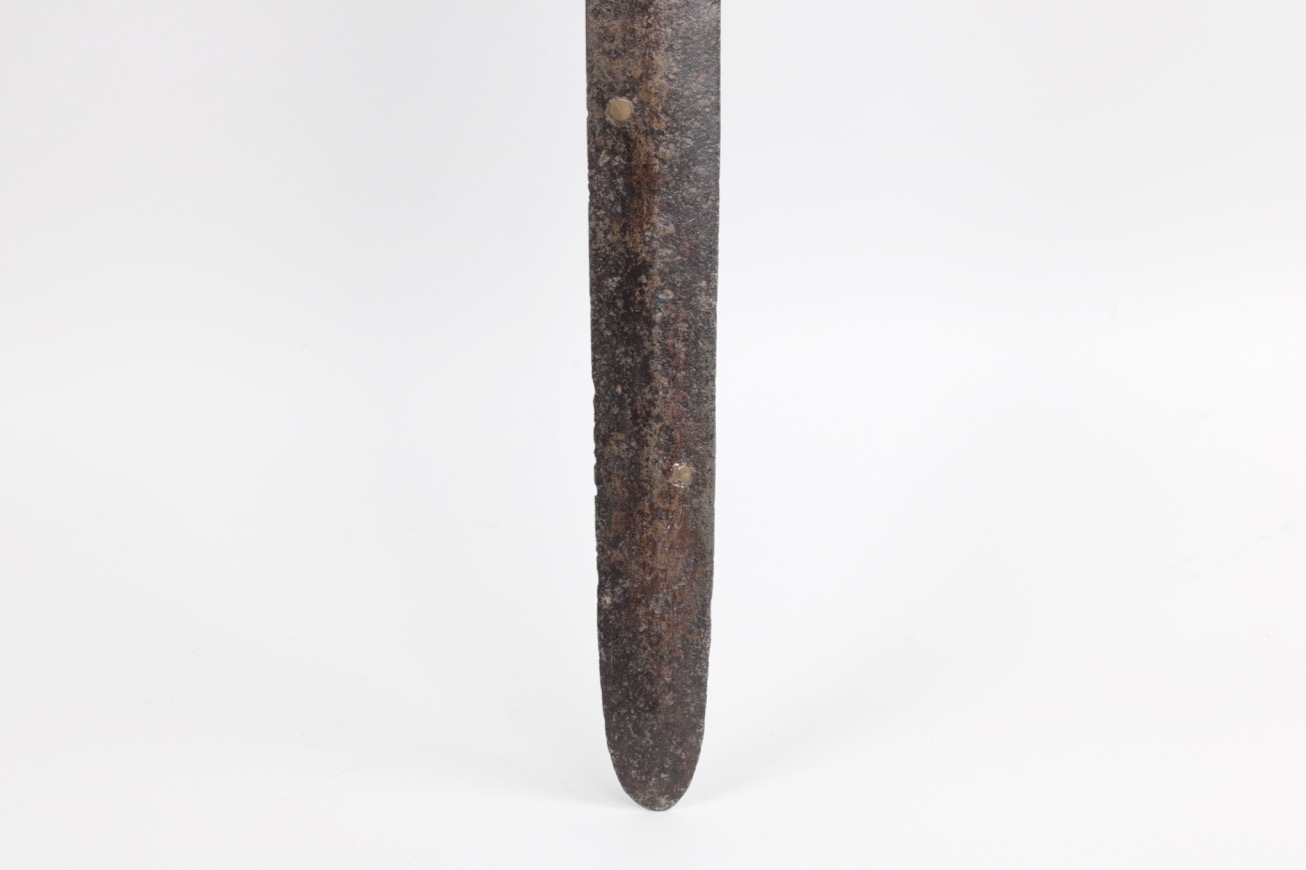

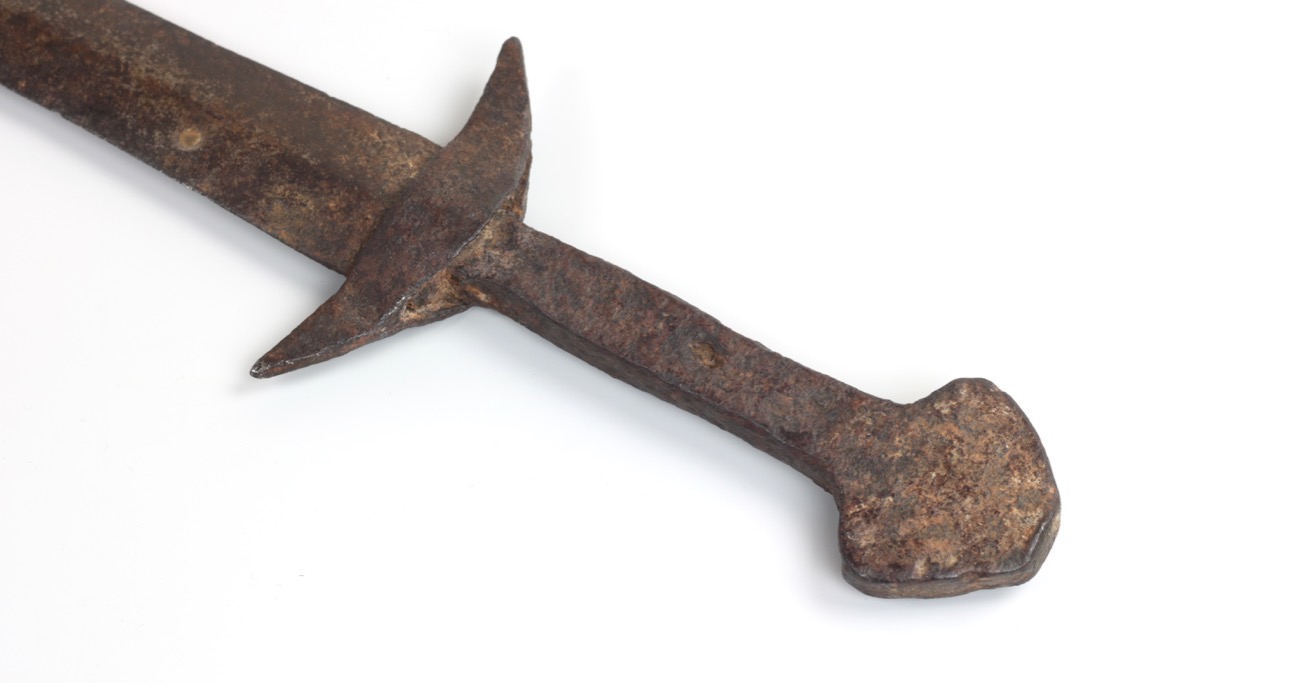
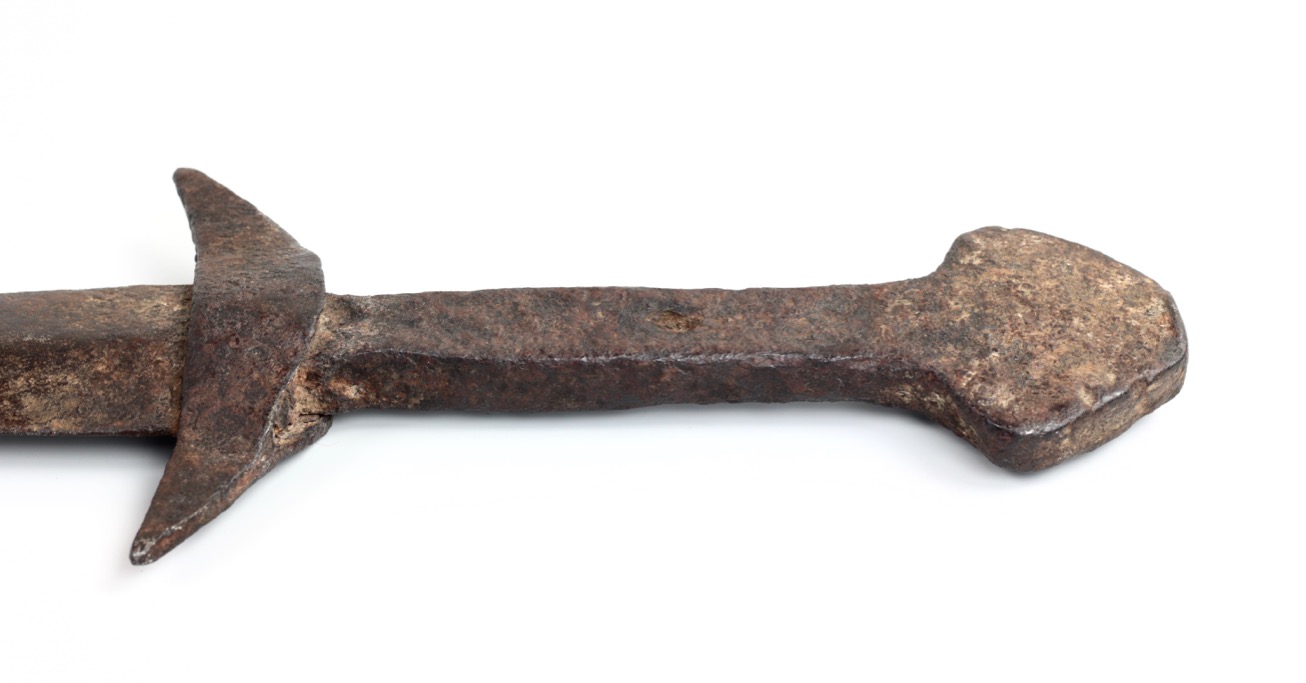
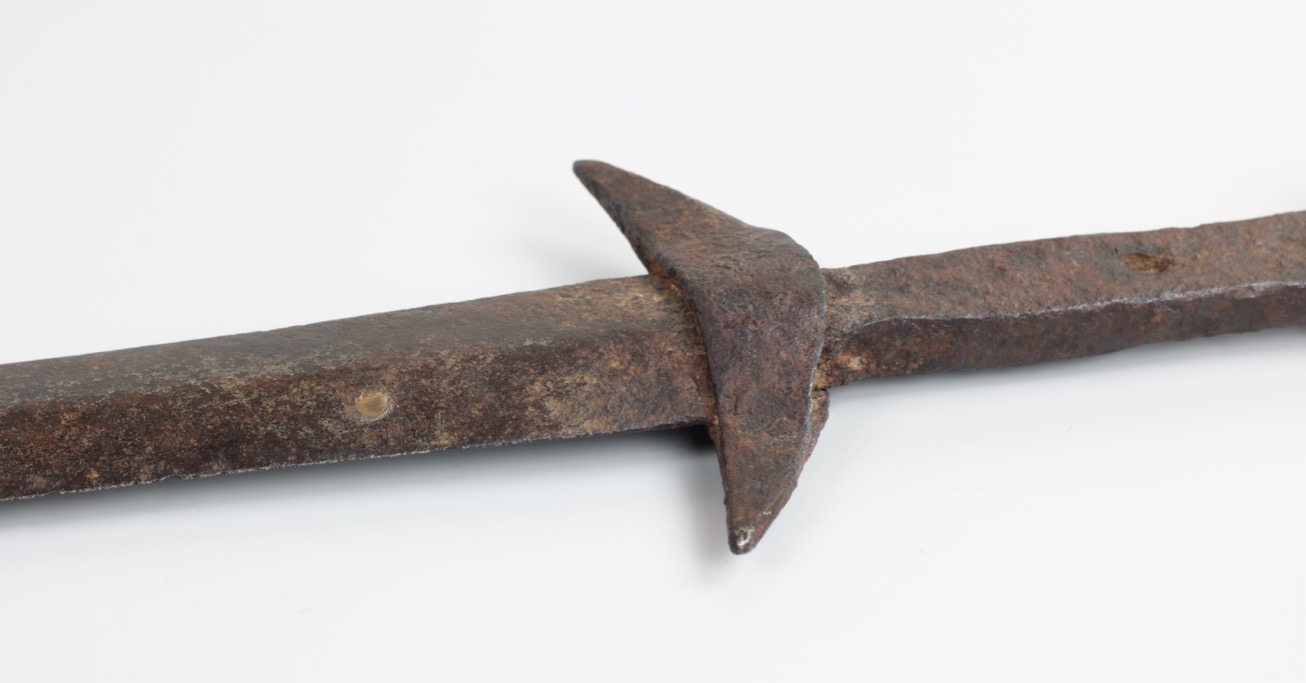







Of classic shape, with a leaf-shaped blade on a socket, connected by a cast bronze base.
A standard pattern Qing military saber, but with the rare addition of a label in Manchu.
A simple utilitarian weapon, probably made for rural martial artists or militia.
In the style of northern work of the 16th and 17th centuries
Probably of Southern origin, with a straight blade and flaring tip.

